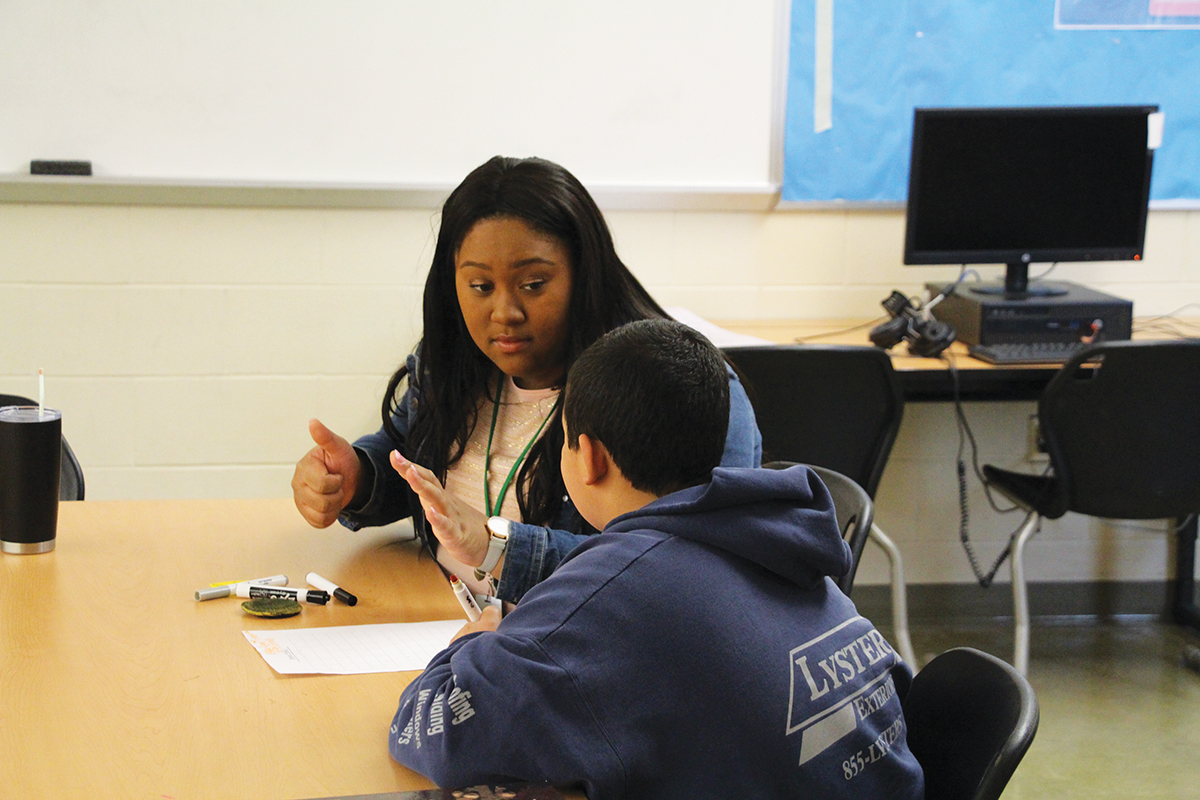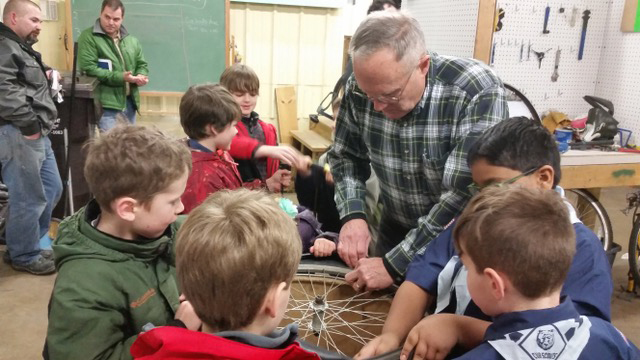WRITER | NICOLETTE CHAMBERY
PHOTOS | COMMUNITIES IN SCHOOLS
A Comprehensive Approach to Education
We’ve all been in a position of needing help but may have resisted asking for it for a variety of reasons: pride, shame, fear of inconveniencing others. Whatever the reason, no one feels comfortable in a position of need, especially when it comes to providing for one’s family.
Communities in Schools (CIS) is a national organization that removes barriers that typically derail students from attending or finishing school, some of which are outside their control. Some barriers include receiving adequate nutrition, help with homework, ample homework supplies, and sufficient healthcare.
While it is atypical for this magazine to profile a national organization, Communities in Schools’ approach resembles that of a local nonprofit in its thoughtful approach and critical review of its impact.
What is particularly remarkable about this chapter of the larger agency is that graduates of Kalamazoo public schools can attend any state or private colleges within the Michigan Colleges Alliance, with 100 percent of their tuition paid. The program is called the Kalamazoo Promise.
There are ten components in total to the CIS operating model:
- Academic Assistance
- Enrichment
- Basic Needs
- Family Engagement
- Behavioral Interventions
- Life Skills
- College and Career Prep
- Mental Health
- Community and Service Learning
- Physical Health
Emily Kobza is the director of development and business engagement of CIS in Kalamazoo, and she shared how the tuition incentive inspires not only students, but community members as well.
“I’ve seen our whole community come together to volunteer their time and donate money in support of our students who are working hard to stay in school and go on to college,” says Kobza.
Kobza was raised in a family that valued education. Her parents taught her that doing well in school would provide options when deciding what she wanted to do in life.
“As I left college, I had a desire to work in the nonprofit sector, and around that same time, the Kalamazoo Promise was developed. I heard someone say that CIS would play a big role in making sure the scholarships were used, because the money was useful only when students could get through grade school and high school. I tucked that away, and, not too long after, came across a job opening within CIS.”
In reviewing CIS programs and the effort so many community members invest in supporting kids in school, the old adage that “it takes a village to raise a child” comes to mind. Perhaps this is how communities are supposed to rally around families who need help filling in the gaps.
“I would say this is very important – an overwhelming majority of parents want to do whatever is possible to make sure their kid can grow up healthy and happy. The only thing that is different is the means with which they’re able to do that. There is a universal desire for your child to do well, but a differentiating factor is having the financial means to facilitate your child’s success. If you’re a parent who works a second-shift job, simply that will make it difficult for you to help your kid when they get home from school each day.”
One of the lessons Kobza highlights that CIS has learned over the last 15 years is the importance of having an on-site CIS individual in the school to ensure the program offerings are utilized. “It’s not necessarily realistic to think that a school principal can manage all of the responsibilities and logistics of volunteer opportunities and checking to see how the volunteering is going.”
Kobza sees the big picture and shares that CIS isn’t just helping students and families; it is also preparing kids for vibrant jobs. “I love the aspect of bringing what people need to where they are. We’re doing that with CIS and cultivating a system of support for both students and parents.”
Communities in Schools
125 West Exchange Place, Kalamazoo 49007
(269) 337-1601
Ciskalamazoo.org








